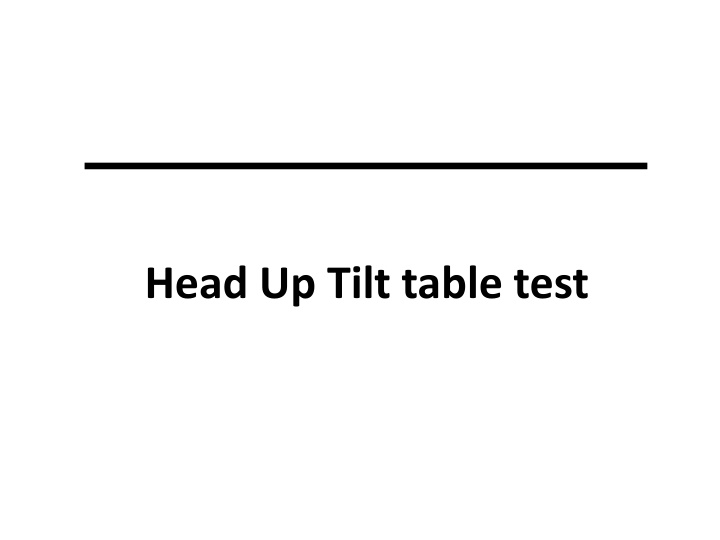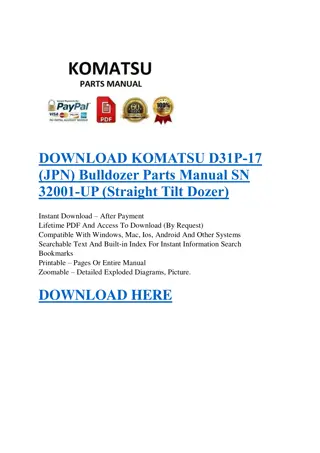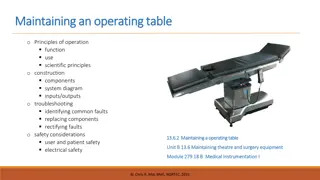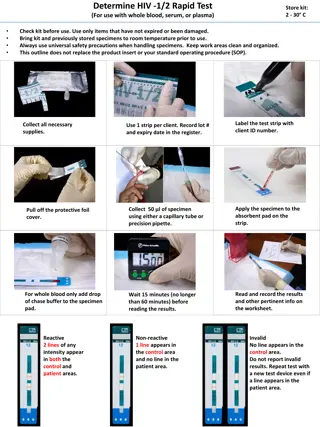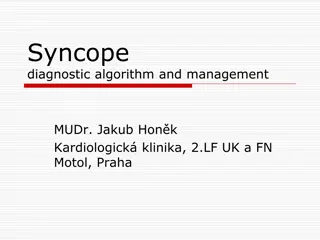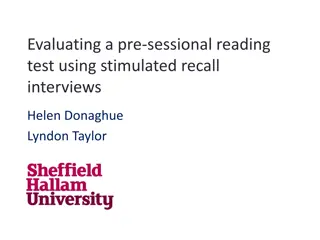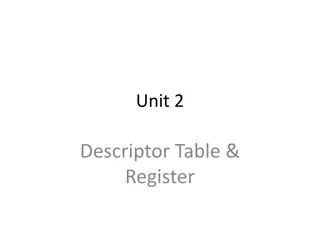Syncope and Tilt Table Test
Syncope, also known as fainting, is a transient loss of consciousness caused by a decrease in blood supply to the brain. Learn about different types of syncope, including cardiac and neurally mediated syncope. Discover the physiological mechanisms behind syncope and how it is diagnosed through a tilt table test. Explore the initial evaluation process and contraindications for this test.
Download Presentation

Please find below an Image/Link to download the presentation.
The content on the website is provided AS IS for your information and personal use only. It may not be sold, licensed, or shared on other websites without obtaining consent from the author.If you encounter any issues during the download, it is possible that the publisher has removed the file from their server.
You are allowed to download the files provided on this website for personal or commercial use, subject to the condition that they are used lawfully. All files are the property of their respective owners.
The content on the website is provided AS IS for your information and personal use only. It may not be sold, licensed, or shared on other websites without obtaining consent from the author.
E N D
Presentation Transcript
SYNCOPE - Definition Transient Loss of consciousness (LOC) Loss of postural tone Quick recovery No neurological complication Mechanism of LOC : Decrease in blood supply to brain
TYPES OF SYNCOPE Cardiogenic syncope Vascular causes - orthostatic hypotension - neurally mediated syncope (vasovagal)
Physiology Blood circulation controlled by Sympathetic nerves - increase HR,BP Parasympathetic nerves -decrease HR,BP
Physiology Venous pooling of blood Decreased blood volume to heart chambers Sensed by receptors Increases sympathetic activity to increase HR,BP But in some persons, there is overactivity of parasympathetic system -fall in BP and HR - Syncope
Cardiac syncope Arrhythmias -tachy,brady Aortic stenosis HOCM Pulmonary embolism LA myxoma
Neurally mediated syncope Also called vasovagal syncope No structural abnormalities Precipitated by prolonged standing,emotion,exertion
In some persons this is associated with severe fall in heart rate and BP, that lead to frequent syncope
Initial evaluation of syncope Differentiate it from seizure Rule out cardiac causes Appropriate cardiac investigations If no cause could be found and ECG is normal,suspected neurally mediated syncope
A tilt table test is used to evaluate the cause of unexplained fainting .
Contraindications Severeanemia Recent stroke (within seven days) Recent myocardial infarction Severe proximal cerebral or coronary arterial disease Critical mitral or aortic stenosis Left ventricular outflow tractobstruction Tachyarrhythmias End-stage renal failure Severe heart failure
Preparation Fasting for 2 hrs No diabetic medications Informed consent
Electrodes Place two of the three ICG electrodes at the lateral side at xiphoid-level.
Neck electrode Place the third electrode on the neckbetween hair line and shoulder. . .
Place the neutral electrodeon the left leg or hip. The ECG electrodes are placed as usual to get a high resolution ECG.
Finger cuff Choose the appropriate finger cuff out of the sizes small, medium and large. The cuff should not be too tight or too loose as this influences the signal quality. Place the finger cuff on two fingers.
Upper arm BP cuff Select the upper arm cuff according to the circumference of the patient s upper arm. small adult=17-25cm,adult=23-33cm large adult=31-40cm. .
STAGES OF THE TEST STAGE 1 - SUPINE FOR 5 MINS STAGE 2 -AT 70 DEGREE TILT UP FOR 20 MIN STAGE 3 -PHARMACOLOGICAL PROVOCATION FOR 20 MIN
Medication used during the test Nitroglycerine venous pooling, volume. sympathetic and HR then syncope episode occurs . Isoprenaline HR+ BP and then a reflex in parasympathetic.
WHEN TO STOP When symptoms appear Very progressive BP FALL for more than 5 min No symptoms at end of 45 min
Test is postive if Symptoms occur Fall in BP or HR
CLASSIFICATION OF POSITIVE RESPONSES Cardio inhibitory Vaso depressor Mixed
Complications If test Is positive. Lower the table immediately Keep the legs up Replace IV fluids If severe Brady then injection atropine.
Management Salt intake Tilt training Physical counter pressure Drugs Pacemaker DDD
Summary Types of syncope Indication of TTT Lead placement and maneuvering Stages of the test Interpretation Management
